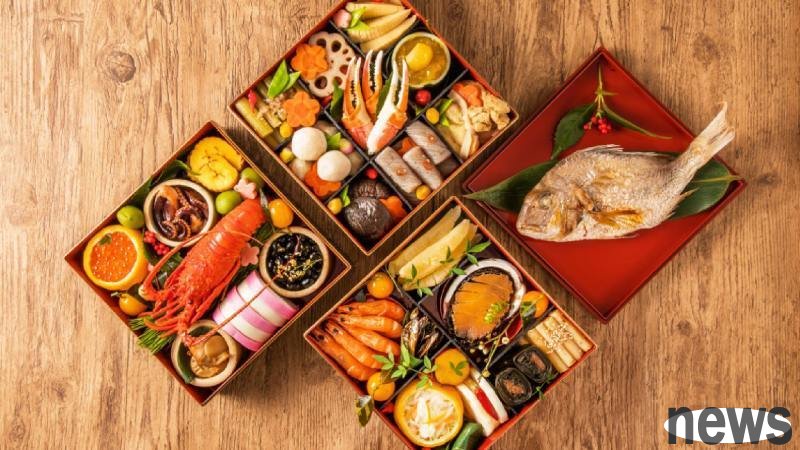On the dining table in Taiwan during the New Year, there may be good dishes such as Buddha jumping on the wall, red lion heads, and even auspicious meanings, such as long-term dishes that mean long-term sacrifice, eating dishes that symbolize good c...

On the dining table in Taiwan during the New Year, there may be good dishes such as Buddha jumping on the wall, red lion heads, and even auspicious meanings, such as long-term dishes that mean "long-term sacrifice", eating dishes that symbolize "good color heads", and eating whole chicken means "family portraits". In Japan, the "Imperial Festival Cuisine (おせち)" that I ate during the New Year also represents a profound meaning. What is the Royal Festival cuisine? What foods will you eat? The following analysis.
The meaning of imperial cuisine and originThe imperial festival originally refers to the main festivals when some seasons (the weather) are converted, such as March 3, May 5, etc. In the Heian era, in order to celebrate these special festivals, the "Imperial Festival (おせちく)" was created to worship the gods. This custom, with the popularity of the common people in the Jiangmen era, has been called "Imperial Festival Cuisine (おせち Cuisine)" until today.
Imperial Festival cuisine will be enjoyed on January 1, and the Imperial Festival cuisine is not like the big dishes in Taiwan. It is usually prepared in advance and will eat cold food on January 1. The meaning is that it is to be less busy when welcoming the gods, and there is also a saying that it can allow the Kitchen God to rest well.
What foods are there in the Royal Festival? Imperial cuisine is usually divided into the following five categories:"Good dishes" delicious dishes used for wine during the "Good dishes", such as black beans, fish eggs, dried fish, burdock, etc.;
"Take り" banquet dishes are the first dishes, similar to the appetizer, and the foods included are red and white fish plates, Li Jin Kuang, Yida Roll, etc.;
"Boiled" is mainly seafood, including stewed fish, fish, sausage, etc.;
"Vinegar" is vinegar-made, such as vinegar mixed with red and white sausage and chrysanthemum dishes;
"Boiled" is mainly based on mountain delicacies, such as boiled before the shell, lotus root, etc.
The food in the imperial cuisine is usually related to the meanings of disease-free rehabilitation, five-foot harvest, and child-like prosperity. There may be 20 to 30 types of traditional imperial cuisine, and the contents will also vary depending on the region. The following are several:
Fish eggs (number of numbs)
The arranged and the whole image symbolizes the prosperity of future generations. In addition, the word "王子" is sometimes written as "子子", and it also has the meaning of praying for double poverty
Black bean"まめ" also means "not afraid of hardship, work wholeheartedly" and "body is strong", which is extended, so black bean also means hope to work vigorously. In addition, black beans are also regarded as food for praying for peace and long-lasting ingredient
burdockThe deep-rooted burdock has deep roots and is passed down from generation to generation. In addition, it also has the symbol of pursuing prayer
Fried egg rolls made of stewed or stewed can increase wisdom and achieve academic achievement
stewed fishIt symbolizes hope to be successful and successful in business
stewed fishThe red and white stewed flowers have congratulations and auspicious meanings. Because stewed fish is a long-lasting fish, it is also regarded as a symbol of stewed food
stewed foodThe long hair and body are bow-shaped, which makes people think of long poverty, so they have the meaning of praying for long poverty
The small taro (litao)The squid made of chestnuts has the symbol of wealth and good fortune
The way of serving the future is to symbolize the bright future. Japanese New Year cuisine is not like Taiwan. The Imperial Festival cuisine will be stacked into a "heavy box", symbolizing the meaning of "creating blessings and happiness". Generally speaking, the imperial cuisine uses five-layer heavy boxes, from top to bottom, namely "one heavy", "two heavy", "three heavy", "and heavy", and "five heavy". However, due to the reduction in the number of modern family members and the complexity of production, three-layer heavy boxes have gradually become the mainstream in recent years. Depending on the number of heavy boxes, the contents will also vary. Taking the contents of five and three sections as an example, theThe first one of the five sections: the delicious "good dishes" used to serve wine in the classics, such as black beans and fish eggs (numbered). The second major: the dishes that were served in the banquet, the "mouthing" similar to the appetizers, such as Ida rolls, red and white fish plates; and the "vinegar products" such as red and white soy sauce mixed with vinegar. The third priority: mainly sea-freshing "burning objects", such as squids, squids, squids, etc. The fourth importance: mainly the "boiled goods" of mountain products, such as lotus root, pineapple, konjac, etc. Five importance: This layer should bring together blessings from the gods, so no food is added.
The three paragraphs are one of the most important points: "Good food" and "Talk and Calling". The second importance: "burn things" and "vinegar things". The third priority is: "cooking things".